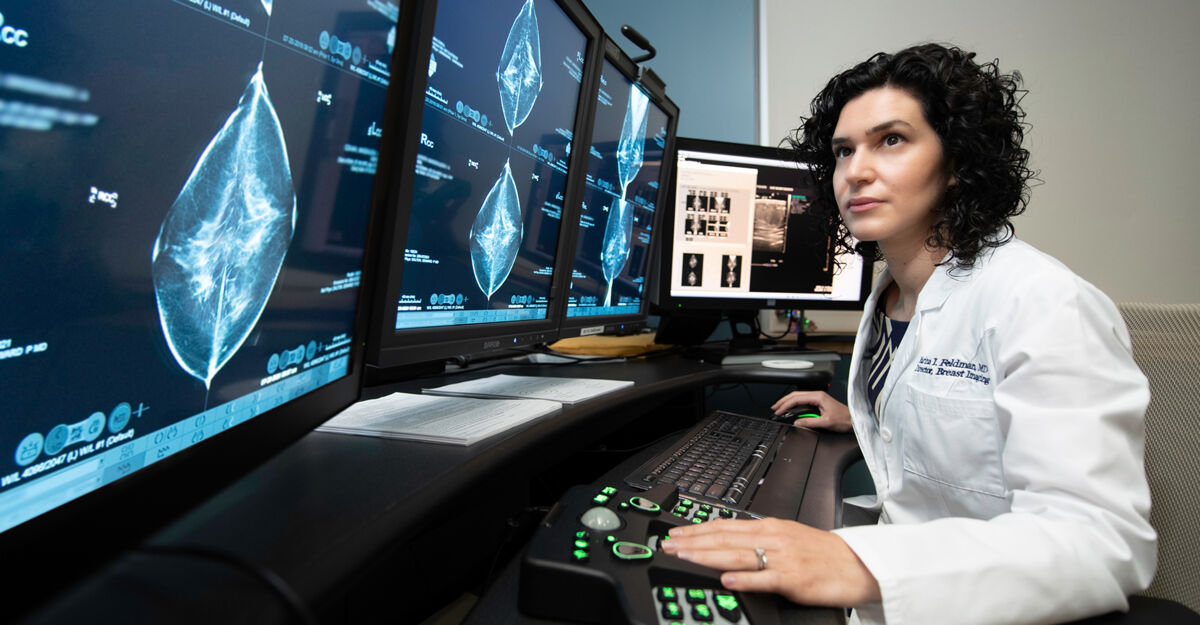
Preparation
Before your mammogram, do not apply any deodorants, powder, perfume, or ointment in your underarm area or anywhere on your breasts. Residue from these products could create misleading exam results.
Wear a two-piece outfit, as you will be asked to undress from the waist up for the examination.
If you have had a prior mammogram, it is very important to know where and when your last examination was performed. You may be asked to obtain your prior films before your examination. Prior films are an important part of assessing your current exam to see if any changes have occurred.
Frequently Asked Questions
Examinations are either ordered as a routine screening examination or a symptom-related diagnostic examination. Screening exams happen when you or your doctor have felt no problems, and there are no symptoms or breast-related complaints.
Diagnostic exams occur when you or your doctor have felt a lump, or you are experiencing new breast pain, new nipple discharge, inversion of the nipple, skin dimpling, retraction or have had breast cancer.
The radiologist will study your examination and give their impression to your physician in a written report. You will also receive a summary of your results in the mail. If you have any questions, please contact your referring provider, who can discuss the results with you and explain what they mean. They will also discuss their recommendations for follow-up mammograms.
Some people experience discomfort during a mammogram because of breast compression. Compression of the breast is necessary because it allows us to take the clearest possible images with less radiation. Compression is not dangerous, and the discomfort is short-term. If you notice that the compression has caused some temporary discoloration of one or both of your breasts, do not be alarmed. Your breasts may also be sore and tender for several days. If your breasts ache, you can take Tylenol®, ibuprofen, or aspirin.
